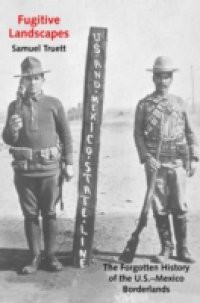Published in Cooperation with the William P. Clements Center for Southwest StudiesIn the nineteenth and early twentieth centuries, Mexicans and Americans joined together to transform the U.S.âMexico borderlands into a crossroads of modern economic development. This book reveals the forgotten story of their ambitious dreams and their ultimate failure to control this fugitive terrain.Focusing on a mining region that spilled across the ArizonaâSonora border, this book shows how entrepreneurs, corporations, and statesmen tried to domesticate nature and society within a transnational context. Efforts to tame a âwild” frontier were stymied by labor struggles, social conflict, and revolution. Fugitive Landscapes explores the making and unmaking of the U.S.âMexico border, telling how ordinary people resisted the domination of empires, nations, and corporations to shape transnational history on their own terms. By moving beyond traditional national narratives, it offers new lessons for our own border-crossing age.

